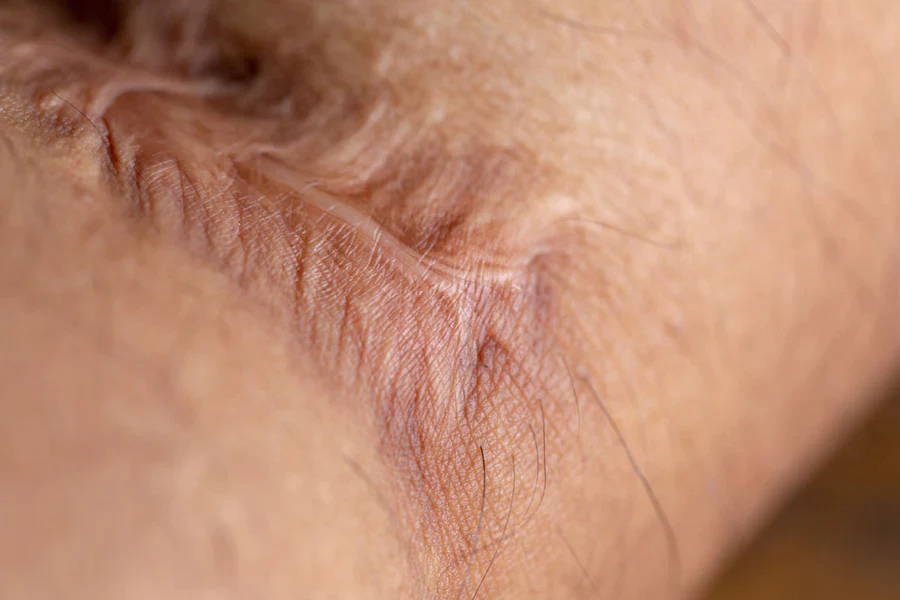What is a Keloid Scar?
AUTHOR
Rejuvaskin
CATEGORY
Science And Health
PUBLISHED
October 21, 2023
REVISED
October 21, 2023

Keloids are a type of raised scar that come in a wide variety of shapes and colors, and are usually rather disorganized looking. Learn about what causes keloids, who gets keloids, and how to flatten raised scars with scar treatments that work.
Introduction
Everyone’s skin scars after an injury or surgery, but not everyone scars the same way. Different skin types heal in different ways, and while some people may see minimal scarring, other people may experience large, raised, and dark-colored scarring. These more severe scars are referred to as "keloid scars", and today we're going to walk you through everything you need to know about what causes keloid scars, who can get a keloid scar, and how to treat keloid scars.
1. What Is A Keloid Scar?
Keloids are a type of raised scar. They occur where the skin has healed after an injury, but unlike hypertrophic scars (which are similar in appearance), keloid scars can grow to be much larger than the original wound - meaning that a cut half an inch long could end up resulting in a keloid scar that’s well over double that size.
2. What Causes Keloid Scars?
While medical researchers don’t know for sure why some people’s skin creates keloid scars and other people’s doesn’t, one study cites that a gene known as the AHNAK gene may play a role in determining who develops keloids and who doesn’t. Researchers found that people who have the AHNAK gene may be more likely to develop keloid scars than those who don’t. After an injury, your cells attempt to try to heal it by forming a scar. In some people, the scar tissue continues to form even after the wound is healed.
3. Who Can Get A Keloid Scar?
It’s estimated that 10 percent of people experience keloid scarring. While men and women are equally likely to get keloid scars, it is more common to see keloid scarring among patients with darker skin tones. Keloid scars are most commonly found on the chest, shoulders, and cheeks, but they can occur on any part of the body.
4. How Do I Get Rid Of A Keloid Scar?
Getting rid of a keloid scar can be difficult and frustrating at times, but there is hope for lessening the appearance of keloid scarring with products that contain silicone, which is considered the “gold standard” in scar healing. At Rejuvaskin we have three scar products designed specifically to treat keloid scars:
Scar FX Silicone Sheeting (for night-time use). At night, place Scar Fx Silicone Sheeting over your clean, dry keloid scar. Scar Fx works to flatten and soften the scar. Silicone sheeting is the preferred method for most people looking to decrease the appearance of their scarring.
Scarsil Silicone Scar Gel (for day-time use).Applying RejûvaSil Silicone Scar Gel 2-3 times during the day can help maintain the healing environment for your scar as well as relieve itchiness and discomfort associated with scars. This product can also work to soften and flatten keloid scarring.
Scar Esthetique Silicone Scar Cream (to address discoloration). Once your scar is flat and smooth, apply Scar Esthetique 3-4 times daily to help with discoloration. Long-term use of Scar Esthetique can provide help with keloid discoloration.
If you’re prone to keloid scarring, there is hope for you when it comes to minimizing the appearance of your scars. Try Rejuvaskin’s proven products today!

